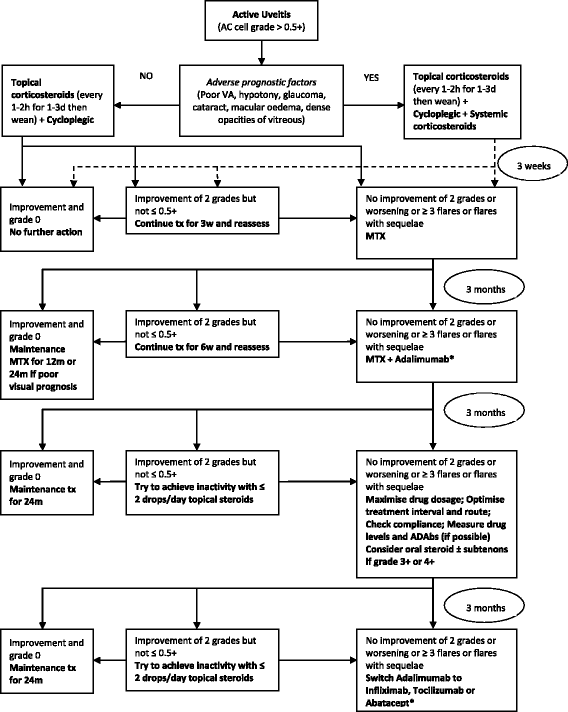Juvenile idiopathic arthritis-associated uveitis
- PMID: 27121190
- PMCID: PMC4848803
- DOI: 10.1186/s12969-016-0088-2
Juvenile idiopathic arthritis-associated uveitis
Abstract
Juvenile idiopathic arthritis (JIA) is the most common rheumatic disease of childhood, with JIA-associated uveitis its most common extra-articular manifestation. JIA-associated uveitis is a potentially sight-threatening condition and thus carries a considerable risk of morbidity. The aetiology of the condition is autoimmune in nature with the predominant involvement of CD4(+) T cells. However, the underlying pathogenic mechanisms remain unclear, particularly regarding interplay between genetic and environmental factors. JIA-associated uveitis comes in several forms, but the most common presentation is of the chronic anterior uveitis type. This condition is usually asymptomatic and thus screening for JIA-associated uveitis in at-risk patients is paramount. Early detection and treatment aims to stop inflammation and prevent the development of complications leading to visual loss, which can occur due to both active disease and burden of disease treatment. Visually disabling complications of JIA-associated uveitis include cataracts, glaucoma, band keratopathy and macular oedema. There is a growing body of evidence for the early introduction of systemic immunosuppressive therapies in order to reduce topical and systemic glucocorticoid use. This includes more traditional treatments, such as methotrexate, as well as newer biological therapies. This review highlights the epidemiology of JIA-associated uveitis, the underlying pathogenesis and how affected patients may present. The current guidelines and criteria for screening, diagnosis and monitoring are discussed along with approaches to management.
Keywords: Biologics; Epidemiology; Juvenile idiopathic arthritis; Pathogenesis; Prognosis; Screening; Uveitis.
Figures

References
-
- Jabs DA, Nussenblatt RB, Rosenbaum JT, Standardization of Uveitis Nomenclature (SUN) Working Group Standardization of uveitis nomenclature for reporting clinical data. Results of the First International Workshop. Am J Ophthalmol. 2005;140(3):509–16. doi: 10.1016/j.ajo.2005.03.057. - DOI - PMC - PubMed
Publication types
MeSH terms
Substances
LinkOut - more resources
Full Text Sources
Other Literature Sources
Medical
Molecular Biology Databases
Research Materials

